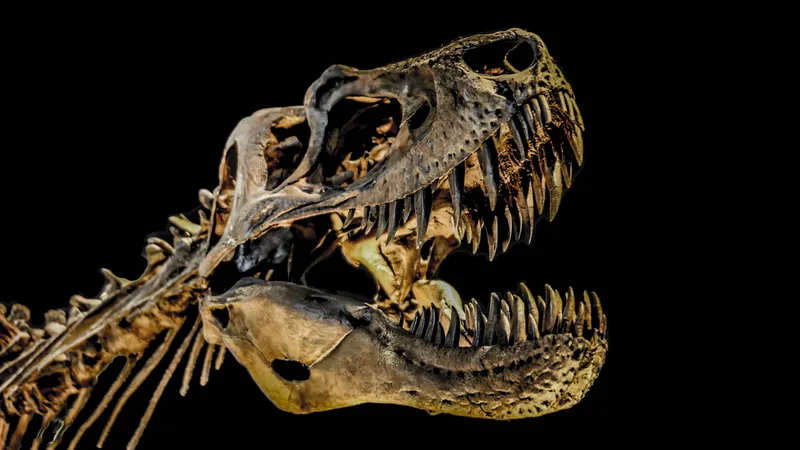
The Hidden Crisis: How Wealthy Collectors are Thwarting T. rex Research
2025-04-15
Author: Li
A recent study reveals that a surge in wealthy collectors buying up Tyrannosaurus rex fossils is severely hampering scientific research. As these ancient giants command astronomical prices at auctions, researchers are left in the dust, unable to access vital specimens.
These prize fossils, often displayed as extravagant centerpieces, can fetch tens of millions of dollars. However, the rising commercial interest poses a significant threat to our understanding of one of history's most iconic predators.
Thomas Carr, an associate professor at Carthage College and director of the Carthage Institute of Paleontology, highlights a troubling trend: more scientifically valuable T. rex fossils are now in private hands than in museums. Carr describes this situation as "dispiriting and exasperating," emphasizing that the loss of juvenile and subadult T. rex specimens is particularly alarming.
He explains, "The early growth stages of T. rex are plagued by a poor fossil record, and losing access to these specimens carries immense scientific costs." Carr's study, titled "Tyrannosaurus rex: An Endangered Species," was published in the journal Palaeontologia Electronica.
To quantify the impact of private ownership, Carr meticulously analyzed records to identify "informative" fossils—those crucial for understanding T. rex development. Astonishingly, he cataloged only 61 specimens in public trusts compared to 71 in private ownership, including 14 juveniles. This number likely underrepresents the true state due to the secrecy of the fossil market.
Currently, a mere 11% of commercially acquired T. rex fossils make their way into public collections, while commercial firms are discovering fossils at double the rate of museums.
The high-stakes fossil market isn’t just focused on T. rex; it encompasses various dinosaur species, with the record for the priciest sale held by a stegosaurus, which auctioned for a staggering $44.6 million in 2024 and is now on loan to the American Museum of Natural History.
Carr hopes that his findings will encourage other paleontologists to investigate how the commercial market affects other fossil species. He urges his colleagues to begin documenting which specimens are slipping away to private collectors.
Response from the Paleo Community
The paleontology community is reacting with concern. Thomas Holtz, a vertebrate paleontologist from the University of Maryland, found it disheartening that critical specimens remain inaccessible. He echoed Carr’s worries, particularly regarding the overrepresentation of juveniles and subadults in the commercial sector.
David Hone, a zoology expert at Queen Mary University of London, expressed a desire for more fossils in public collections but noted he isn't as troubled by the fossil trade as Carr.



 Brasil (PT)
Brasil (PT)
 Canada (EN)
Canada (EN)
 Chile (ES)
Chile (ES)
 Česko (CS)
Česko (CS)
 대한민국 (KO)
대한민국 (KO)
 España (ES)
España (ES)
 France (FR)
France (FR)
 Hong Kong (EN)
Hong Kong (EN)
 Italia (IT)
Italia (IT)
 日本 (JA)
日本 (JA)
 Magyarország (HU)
Magyarország (HU)
 Norge (NO)
Norge (NO)
 Polska (PL)
Polska (PL)
 Schweiz (DE)
Schweiz (DE)
 Singapore (EN)
Singapore (EN)
 Sverige (SV)
Sverige (SV)
 Suomi (FI)
Suomi (FI)
 Türkiye (TR)
Türkiye (TR)
 الإمارات العربية المتحدة (AR)
الإمارات العربية المتحدة (AR)